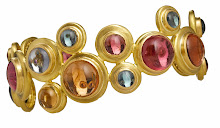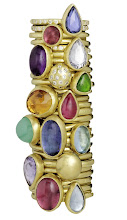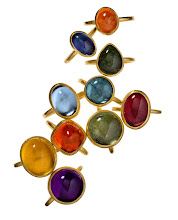Years ago, I worked for my Mother who had a gallery of contemporary American craft in Central Florida. Among the artists she represented was William Harper, then a professor of jewelry and metalsmithing at Florida State University, and perhaps the most innovative enamelist ever. We mounted an exhibition titled "Artist as Alchemist," which featured not only Harper's jewelry, but a series of drawings that might have seemed a major departure from his metalwork, though I saw them as a completely natural progression from one form of expression to another. I think all of these artists' abilities to successfully explore territory outside of their usual medium was due to in part to a natural curiosity and desire to keep things interesting, but also to their being so fluent and free with the creative language. This concept has come up in a lot of my conversations with artist friends lately -- the idea of being so immersed in one's creative language, 'speaking' it every day, and always trying to push the personal boundaries to learn and discover new techniques, new mechanics, new 'words' in the expanding vocabulary of the craft. I heard recently that a retrospective of Harper's work is being assembled. When I have more info, I will post a link. For anyone interested in the studio jewelry movement in the US in the last century, a show of Harper's work is a must-see. I am fortunate to own one of his pins, a serpentine enamel piece with a little gray pearl, made sometime in the mid-80's.
Here's a link to an article in the latest issue of JCK Online that further talks about this big studio jewelry movement. There has long been a strong distinction between fine art jewelry and commercial designer jewelry, although the gap is narrowing. It's an exciting time to be making jewelry.
A final thought as I wrap up this post, I'm watching the Olympic trials as I write, and talk about striving for excellence -- and fluency -- in the language of your life's pursuit! It's all so very inspiring.



